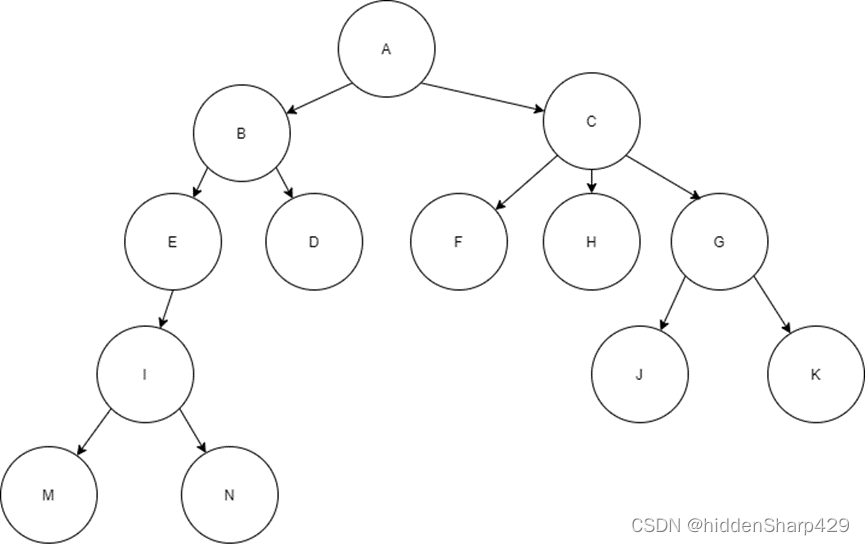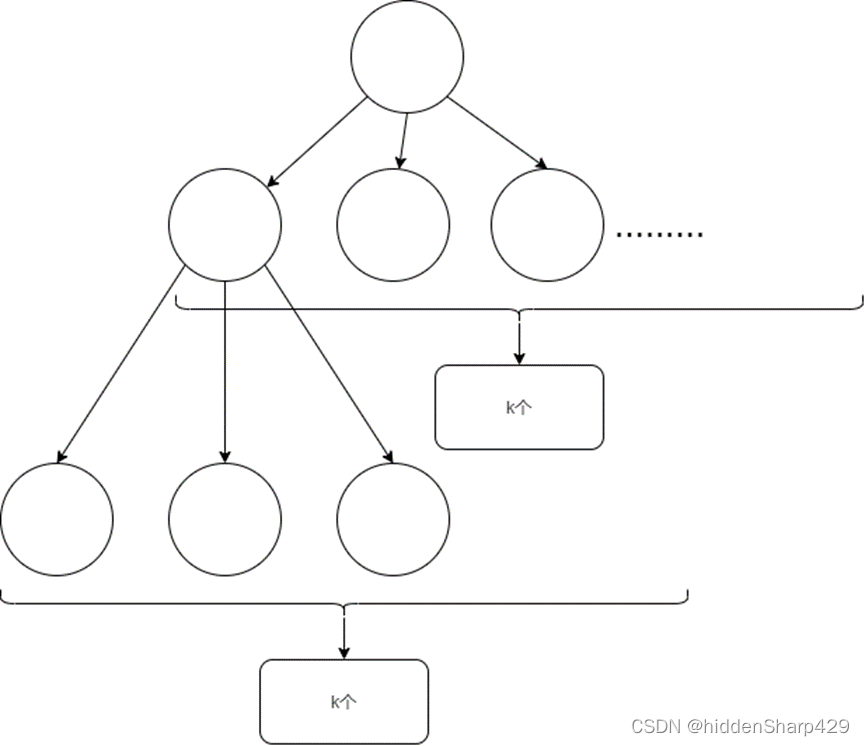topic
Topic 1
知一棵树边的集合为
< I , M > , < I , N > , < E , I > , < B , E > , < B , D > , < A , B > , < G , J > , < G , K > , < C , G > , < C , F > , < H , L > , < C , H > , < A , C > {<I,M>,<I,N>,<E,I>,<B,E>,<B,D>,<A,B>,<G,J>, <G,K>,<C,G>,<C,F>,<H,L>,<C,H>,<A,C>} <I,M>,<I,N>,<E,I>,<B,E>,<B,D>,<A,B>,<G,J>,<G,K>,<C,G>,<C,F>,<H,L>,<C,H>,<A,C>
Please draw the tree and answer the following questions:
- Which is the root node?
- Which are the leaf nodes?
- Which are the parents of node G?
- Which are the ancestors of node G?
- Which are the children of node G?
- Which are the descendants of node E?
- Which are the siblings of node E? Which are the siblings of node F?
- What are the level numbers of nodes B and N?
- What is the depth of the tree?
- What is the depth of the subtree rooted at node C?
The tree shape

Question 1 Answer
(1) Root node: A
(2) Leaf nodes: M, N, J, K
(3) Parents of node G: C
(4) Ancestors of node G: A, C
(5) Children of node G : J, K
(6) Descendants of node E: I, M, N
(7) Brothers of node E: D; brothers of node F: H, G
(8) The level numbers of nodes B and N are: 2 , 5
(9) Depth of tree: 5
(10) Depth of subtree rooted at node C: 2
Topic 2
How is a tree of degree 2 different from a binary tree?
Question 2 Answer
- In terms of structure: there is no strict parent-child relationship between the nodes of a tree with a degree of 2, but each node in the binary tree has a clear parent node and left and right nodes.
- Traversal method: Binary trees are commonly traversed in preorder, inorder, and postorder, while trees with a degree of 2 can be traversed in a more special traversal method, such as: starting from the root node, traversing the left child node first, and then traversing the right child Node, and finally recursively traverse the subtree.
Topic 3
It is known that there are n1 nodes of degree 1 in a tree of degree k, n2 nodes of degree 2, ..., nk nodes of degree k, how many leaf nodes are there in the tree ?
Question 3 Answer
Sum of degrees: n − 1 ① Sum of degrees: n-1 ①sum of degrees: n−1①Sum
of degrees: n 1 + n 2 ∗ 2 + n 3 ∗ 3.. + nm ∗ m ② Sum of degrees: n1+n2*2+n3*3 ..+ nm*m ②Sum of degrees: n 1+n2 _∗2+n 3∗3..+nm∗m ②Simultaneous
solution: n 0 = n 2 + . . . + ( k − 1 ) ∗ nk + 1 Simultaneous solution: n0=n2+...+(k-1)*nk+1Simultaneous solution: n 0=n2 _+...+(k−1)∗nk+1
Topic 4
It is known that in a tree containing n nodes, there are only branch nodes with degree k and leaf nodes with degree 0, find the number of leaf nodes contained in the tree
Question 4 Answers
Let there be x leaf nodes and n − x branch nodes with degree k. Let x be leaf nodes and nx branch nodes with degree k.Let the number of leaf nodes be x , and the branch nodes with degree k be n−x so

there are a total of1 + ( n − k ) ∗ k 1+(nk)*k1+(n−k)∗k nodes (where 1 is the topmost node, which is the root node)
solution: x = n − ( n − 1 ) / k solution: x= n-(n-1)/kSolution: x=n−(n−1)/k
Topic 5
Proof: The following relationship is satisfied between the number of leaf nodes n0 and the number of non-leaf nodes n1 on a full k-ary tree: n 0 = ( k − 1 ) n 1 + 1 n_0=(k-1)n_1+1n0=(k−1)n1+1
Question 5 Answers
Since it is a full k-ary tree, there are only leaf nodes and non-leaf nodes with degree k. Suppose there are n + 1 layers
n 1 = ( 1 − kn ) / ( 1 − k ) n_1=(1-k^ n)/(1-k)n1=(1−kn)/(1−k)
n 0 = k n n_0=k^n n0=kn
therefore proves that
n 0 = ( k − 1 ) n 1 + 1 n_0=(k-1)n1+1n0=(k−1 ) in 1+1
conclusion
Because it is an algorithm side dish, the methods and ideas provided may not be very good, please bear with me~ If you have any questions, please leave a message to discuss. If you think this article is helpful to you, can you give me a free like? The communication between us is my biggest motivation!